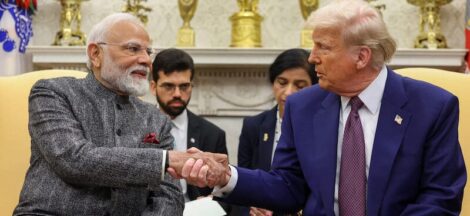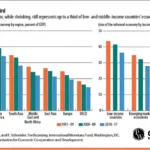By Anjan Roy
As it is common among politicians facing serious economic issues, the government of the day heaps all reasons for economic ruin or downturn or a difficult situation on the heads of the central banks.
Generally, the governments and finance ministers want their say in fixing interest rates and generally monetary policies. Defending their turf, the governors and chiefs of central banks, claim their exclusive sway over these decisions.
Right now, Donald Trump wants the US central bank to lower its policy rates and also support the present government with an expansionary monetary policy, whereas the Federal Reserve has laid down a cautious policy stance and “data driven” approach to monetary policy and interest rates.
With such an overt divergence, President Donald Trump has launched his frontal attack on the US Federal Reserve, the country’s central bank, and said that removal of the Federal Reserve chairman, Jerome Powell, could not have been longer than now.
Trump is hell bent on removing the Federal Reserve chairman before his term ends later in the year. But there are serious judicial precedents upholding the independence of the central bank chief and other independent government offices. Trump is raring to open another front in his all out wars on whoever he could fight.
In our country, confrontation between the governor of the Reserve Bank and the finance minister of the day were none too few.
Raghuram Rajan, one of the most effective governors of the Reserve Bank, was denied a renewal by the Narendra Modi government after he went public with his views on diversity and Indian culture and related topics. There was not much disagreement between Rajan and the government of the day over interest rate fixation though.
In another instance, when P.V. Subba Rao was the Reserve bank governor and P Chidambaram was finance minister, the latter had given indications galore for a softer interest rate policy. However, Subba Rao in his wisdom thought such a policy stance was inadvisable in the context of the inflationary situation in the country.
It was in that context that Chidambaram made the observation that if the RBI refuses to walk along with the finance ministry, then the latter would rather walk alone.
Prompt came Subba Rao’s repartee, if not now, the finance minister in his lonely walks would feel grateful that the RBI was there to take care of the vicissitudes of ground level monetary policy management than it was not.
Another Reserve Bank governor, Urjit Patel, had a similar confrontation with the government of the day over whether Reserve Bank should transfer its surplus funds and reserves to the government to tide over the executive’s need for additional funding.
Urjit Patel’s hands were however somewhat tied by what one of his immediate juniors, the deputy governor, Viral Acharya, had stated in public. Viral Acharya presented a well reasoned paper on the need for surplus funds reserves for the central bank and thus argued openly against the government demands of funds from RBI.
In the face of the spirited defence of RBI independence over its decision on providing government with funding, Governor Patel was almost obliged to step down defending the central bank authority. Of course, Patel might have had his sympathies with Acharya.
The next governor of the RBI, Shaktikanta Das, a hard-boiled bureaucrat of long standing, had demurely handed over the large surplus RBI funds to the government of the day. A bureaucrat who did not have too much of grounding in technical economics or economic management, Das was thought to be a “rubber stamp” central banker, parroting the government’s views.
But too enough, Das turned out to be an astute governor and quite adept at the intricacies of monetary policy management. He had given leadership to the central bank through some of the most sensitive times.
But it looks as though, even Das had to leave the central bank, as his tenure was no longer extended, on some perceived differences over the interest rate policy. Once again, the government was for a softer interest regime, while the governor was not actually on the same page with the government of the day during his last years of tenure.
Enter the new governor of the Reserve Bank, Sanjay Malhotra, and a new phase of accommodating monetary policy has dawned. Maybe, the change in the policy stance was unavoidable in the context of Trump’s tariff war and threats of a slowdown.
A similar episode of deep divide between the government and the central was witnessed in Turkey when the president, Recep Tayyib Erdogan, was publicly criticising the country’s central bank for pursing conventional economic wisdom of tight money policy for controlling a run-away inflation. Erdogan never believed that high interest rates were a sure medicine for inflation. In the event the powerful president had his way and the central bank governor had to seek alternative employment.
Looking over the shoulders in central banks’ history, there was a singular instance when the central bank governor and a finance minister had come to fisticuffs over monetary policy. That was in Argentina at the height of the country severe financial meltdown.
The currency had slipped sharply against the dollar, entire financial system was tottering and the government and the central bank was having a show of strength. Ultimately, however, the central bank governor had to leave and the finance minster had his way.
Eventually, the country landed with the IMF seeking accommodation.
Maybe, the lesson from central bank-government tiffs, lies in admitting that the technical competence of the former are much more dependable and civilised way of tackling economic issues than the expediency of the government functionaries. (IPA Service)




 Informal Employment In India Remains Close To 90 Per Cent Since 2014
Informal Employment In India Remains Close To 90 Per Cent Since 2014 